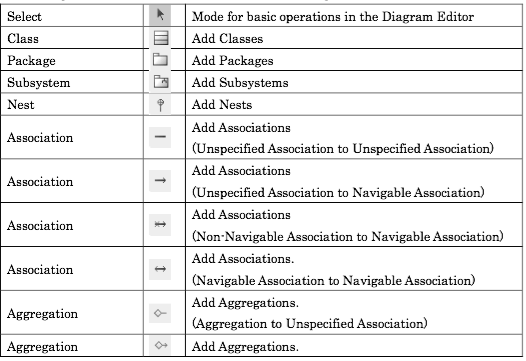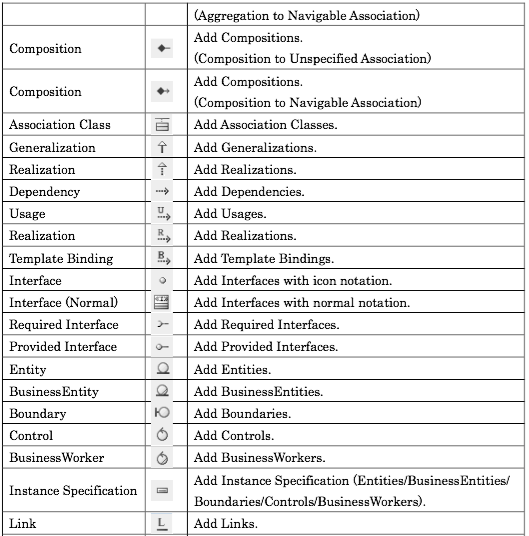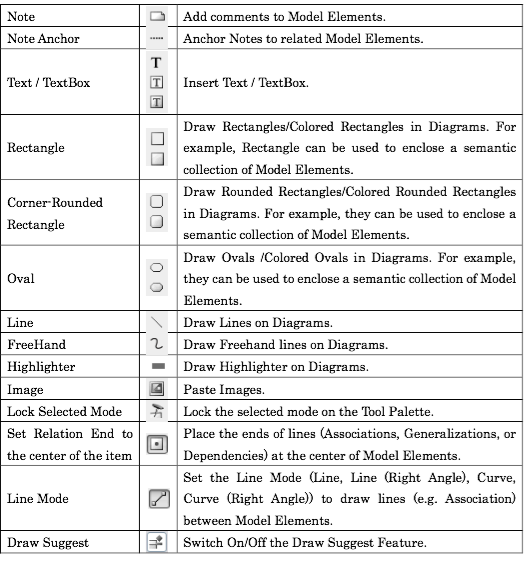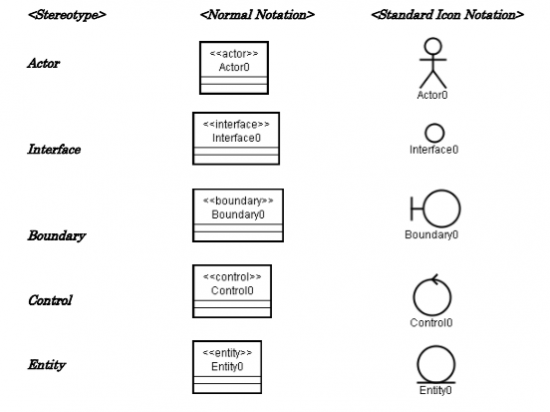Basic Modelling Concepts: Difference between revisions
Jump to navigation
Jump to search
| Line 44: | Line 44: | ||
| Association defines a relationship between classes of objects that allows one object instance to cause another to perform an action on its behalf. <br>A "uses" B = Aggregation : B exists independently (conceptually) from A. | | Association defines a relationship between classes of objects that allows one object instance to cause another to perform an action on its behalf. <br>A "uses" B = Aggregation : B exists independently (conceptually) from A. | ||
<br>Example: | <br>Example: | ||
<br>A Company is an aggregation of People. A Company is a composition of Accounts. When a Company ceases to do business its Accounts cease to exist but its People continue to exist. | <br>A Company is an aggregation of People. | ||
A Company is a composition of Accounts. | |||
When a Company ceases to do business its Accounts cease to exist but its People continue to exist. | |||
|} | |} | ||
Revision as of 16:27, 18 January 2015
Modelling tools have their own interpretation of how diagrams, icons are used. This webpage tries to give some clues on how this implementation are made.
| Diagram Elements | Sterotypes |
|---|---|
  |
 |
Object Orientation Basic Elements
Basic OO Elements:
Association
| https://upload.wikimedia.org/wikipedia/en/f/f5/BidirectionalAssociation.png | https://upload.wikimedia.org/wikipedia/en/0/05/UnidirectionalAssociation.png |
|---|---|
| A bidirectional association | Unless otherwise specified, navigation across an association is bidirectional, although it may be limited to just one direction by adorning some end with an arrowhead pointing to the direction of traversal. |
| Description | |
| Association defines a relationship between classes of objects that allows one object instance to cause another to perform an action on its behalf. | |
Aggregation
| https://upload.wikimedia.org/wikipedia/commons/d/d0/Aggregation-Composition3.png |
|---|
| A bidirectional association |
| Description |
| Association defines a relationship between classes of objects that allows one object instance to cause another to perform an action on its behalf. A "uses" B = Aggregation : B exists independently (conceptually) from A.
|
Composition
A "owns" B = Composition : B has no meaning or purpose in the system without A.
Example:
A Text Editor owns a Buffer(composition). A Text Editor uses a File (aggregation).
See also
http://agilemodeling.com/images/style/classDiagramAnalysisVsDesign.gif top
- Agile Modeling, Class Diagrams Guidelines. See example above.
